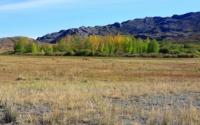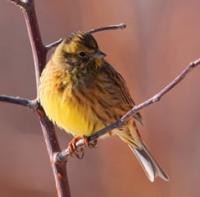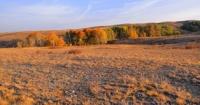You are here
Nature in mountains of Aiyrtau.



Nature of North-Kazakhstan region.
“Do not discover the old truths: everyone knows that the sun is setting in the west”
Natural sights of North-Kazakhstan region.
The territory of the Aiyrtau district of the North-Kazakhstan region is located within the forest-steppe zone in the forest-steppe zone with birch forests and pines. The vegetation is represented by the following types: forest communities; steppe communities; meadow vegetation.
Currently, the region’s forests stretch from the northwest to the southeast. Large forests are located in the north of the territory (Orlinogorsk forestry), in the southwest (Ruzayevsky forestry). Most of the forests are included in the Kokshetau National Natural Park (GNPK Kokshetau).
Pine ordinary (Pine family). Pine forests occupy a significant part of the territory of the Aiyrtau region. Pine forms continuous massifs in the mountains of Aiyrtau, Imantau, on the hill of Burkitta. Pine forests are dense and clean, very beautiful.
Tree trunks can reach a height of 35 m. It is difficult to overestimate the importance of pine in human life. This tree purifies the air, retains water and strengthens the soil. Wood serves as an excellent building and ornamental material.
Buds collected from living trees contain many useful substances and are widely used in medicine. Pine grows quickly and is undemanding to soils, so it is widely used in landscaping.
The fauna of the Aiyrtau region is very rich.
The fauna of vertebrates totals 283 species, including mammals 47 species, birds - 210 species, reptiles - 3, amphibians - 5, fish - 12 species. The wide distribution of pine forests in the region determines taiga elements in its fauna.
This specificity is manifested both in the species of recently extinct - bear and wolverine, as well as in the extant - hare, roe deer, ermine, lynx, red deer, squirrel. Forest forms of animals are widespread here: white hare, roe deer, wolf, capercaillie, ermine, badger, wood mouse, shrew.
The second most abundant species are plate-billed. This group includes birds of different sizes and colors. This is a mute swan, whooper swan, gray goose, mallard, etc.
State National Natural Park "Kokshetau".
The tourist boom, which began in the 60s of the 20th century, led to an anthropogenic pressure on the unique natural landscapes of Shalkar, Imantau, Zhaksyzhangystau. This environmental situation dictated the need for state protection of the unique nature of the Ayyrtau region.
By the Decree of the Government of the Republic of Kazakhstan dated April 10, 1996 No. 415, the Kokshetau State National Natural Park was established. The territory of the Kokshetau GNPP is located within the boundaries of the Ayyrtau and Zerendinsky (Akmola Oblast) administrative districts.
The office of the General Directorate of GNPK Kokshetau is located in Kokshetau. The main territory of the park covers more than 135,000 hectares and includes mountain forests and lake water areas of the Zerenndinsky, Shalkarsky and Imantausky natural zones.
The North Kazakhstan part of the Kokshetau GNPP is located in the south of the region and is represented by mountain forest landscapes of the Shalkar, Imantau and Aiyrtau longitudinal zones, including lake water areas of lakes Shalkar, Imantau, Saumalkol.
The region is often compared to Sweden, as landscapes are very similar in many respects. The region is 60% covered with forests that alternate with the steppe zones, mainly covered by fescue-feather grass vegetation.
The lakes have clean, fresh water, with the exception of Lake Shalkar, which is famous for its water, which has a therapeutic effect associated with a small concentration of salt in the water. Lake Shalkar is a favorite vacation spot for Russian citizens who come all summer.
The National Park is a relatively large territory where three main objectives are ensured: environmental (maintaining the ecological balance with the preservation of natural ecosystems), recreational (regulated tourism and recreation), scientific (development and implementation of methods for preserving the natural complex in conditions of mass admission of visitors).
The Kokshetau National Natural Park performs the following main tasks:
preservation of reference and unique natural complexes and objects, as well as historical and cultural monuments;
development and implementation of scientific methods for the conservation of natural complexes in conditions of recreational use;
restoration of disturbed natural and historical-cultural complexes and objects;
organization of environmental education of the population;
conducting environmental monitoring.
Monuments of nature. On the territory of Aiyrtau region there are 3 natural monuments. The paths of tourist routes pass to them; they are a favorite place for visiting, both tourists and the local population.
Authority:
http://op-airtau.sko.kz
Photo
Alexander Petrov.







